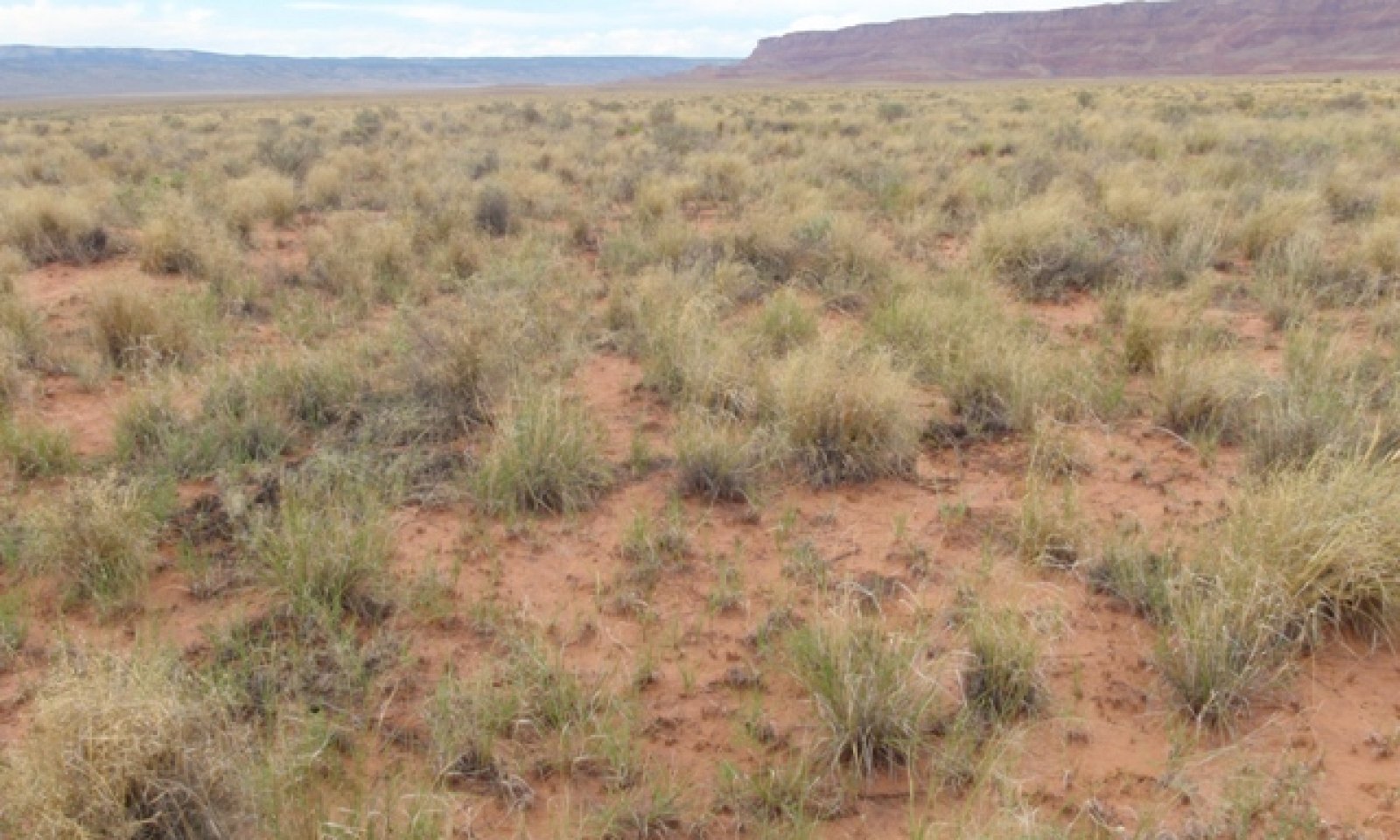
Sandy Upland 6-10" p.z.
Scenario model
Current ecosystem state
Select a state
Management practices/drivers
Select a transition or restoration pathway
- Transition T1A More details
- Transition R2A More details
-
No transition or restoration pathway between the selected states has been described
Target ecosystem state
Select a state
Description
This plant community includes the Historic Climax Plant Community (HCPC) and has been estimated by observing and sampling relatively undisturbed sites. This perennial grassland plant community has a mix of cool season bunchgrasses such as Indian ricegrass and needle-and-thread, and warm season grasses, such as black grama, galleta and blue grama. A mix of shrubs makes up the second most dominant component of the plant community followed by a mix of forbs, both perennial and annual. The production and percent composition of both individual plants and groups of plants varies from season to season and year to year due to the bi-modal nature of precipitation as well as variation from one year to the next in the amount and timing of precipitation received.
Submodel
Description
This state is characterized by a increase of shrubs with scattered perennial grasses, but non-native annual grasses and forbs are well established in the plant community. In this state the amount of annual grasses and forbs varies from 2-20%, but will fluctuate from year to year due to variable precipitation and degree of disturbance. Soil surface disturbance, especially when frequently disturbed, can cause the amount of non-native annual grasses and forbs to increase.
Submodel
Mechanism
The invasion and establishment of non-native annual grasses and forbs along with continuous surface disturbance, reduce perennial cover.
Mechanism
This possible return pathway may take several years or even decades. Reduce or no soil surface disturbance, prescribed grazing or no grazing, favorable precipitation, soil stability, seed source for grass recovery, possible reseeding of grasses and shrubs. Possible weed treatment for introduced annuals, large area may not be feasible.
Model keys
Briefcase
Add ecological sites and Major Land Resource Areas to your briefcase by clicking on the briefcase (![]() ) icon wherever it occurs. Drag and drop items to reorder. Cookies are used to store briefcase items between browsing sessions. Because of this, the number of items that can be added to your briefcase is limited, and briefcase items added on one device and browser cannot be accessed from another device or browser. Users who do not wish to place cookies on their devices should not use the briefcase tool. Briefcase cookies serve no other purpose than described here and are deleted whenever browsing history is cleared.
) icon wherever it occurs. Drag and drop items to reorder. Cookies are used to store briefcase items between browsing sessions. Because of this, the number of items that can be added to your briefcase is limited, and briefcase items added on one device and browser cannot be accessed from another device or browser. Users who do not wish to place cookies on their devices should not use the briefcase tool. Briefcase cookies serve no other purpose than described here and are deleted whenever browsing history is cleared.
Ecological sites
Major Land Resource Areas
The Ecosystem Dynamics Interpretive Tool is an information system framework developed by the USDA-ARS Jornada Experimental Range, USDA Natural Resources Conservation Service, and New Mexico State University.


